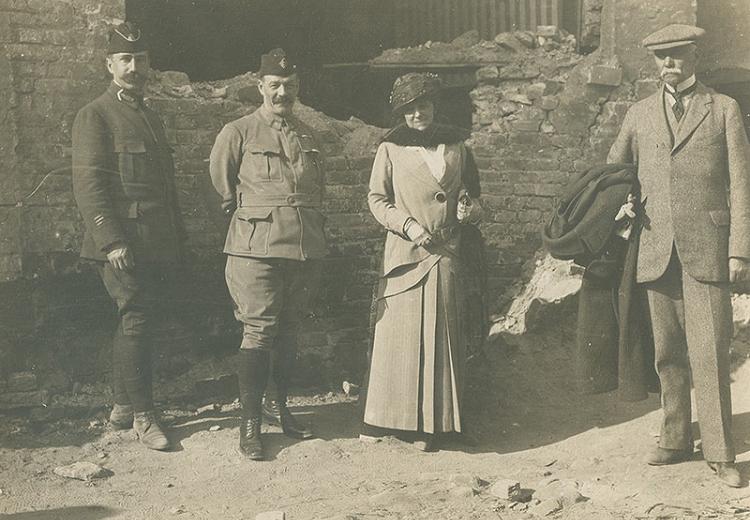Edith Wharton: War Correspondent

American author Edith Wharton, shown here with French soldiers and friend Walter Berry, was a correspondent for Scribner's Magazine during World War I.
"Dazed and slowly moving—men and women with sordid bundles on their backs, shuffling along hesitatingly in their tattered shoes, children dragging at their hands and tired-out babies pressed against their shoulders: the great Army of the Refugees. Their faces are unmistakable and unforgettable…The look in their eyes is part of the look of Paris."
—Edith Wharton, Fighting France, From Dunkerque to Belfort (1915)
In this lesson, students will learn how the field of war correspondence has evolved. Through reading chapters of Edith Wharton's book, Fighting France, From Dunkerque to Belfort, they will explore an American correspondent's experiences during World War I. Students will then create and present their own correspondence report.
Guiding Questions
What role have correspondents played in recent wars?
How did Edith Wharton convey her perceptions of France during World War I to American readers in her book, "Fighting France, From Dunkerque to Belfort?"
Learning Objectives
Describe how the field of war correspondence has evolved.
Cite examples of wartime reporting through Edith Wharton's book, "Fighting France, From Dunkerque to Belfort."
Create and present a correspondence report.
